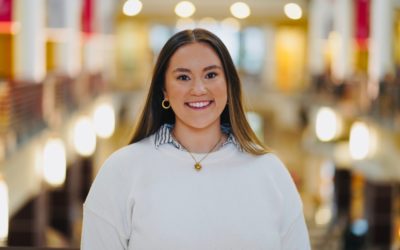It has been just over six months since the Post and Courier published its July 5, 2010 article on the formation of the Charleston Promise Neighborhood. For many residents in the Charleston area, this article was the first they heard of our area’s ambitious effort to replicate the success of the nationally-renowned Harlem Children’s Zone, founded by Geoffrey Canada. The July article reported that The Charleston Promise Neighborhood staff was just moving into its newly-rented office space, and that it had just hired its Chief Executive and Managing Director.
Importantly, the article also reported that the Charleston Promise Neighborhood had recently applied for one of twenty federal planning grants in the amount of $500,000, designed to help create promise neighborhoods, and that the grant recipients would be announced in September.
Then on September 22, 2010 came the news that The Charleston Promise Neighborhood was not one of the 20 grant recipients selected nationwide. In another Post & Courier article of that date, leaders of the organization including Board Chair Bill Hewitt and CEO Dwayne Green, expressed optimism that the plans for the organization would continue without the grant funds. They acknowledged that with out receipt of the $500,000 grant, the organization’s path would be different. This was the last news that many may have read about The Charleston Promise Neighborhood. Many who read the initial article with excitement and anticipation may properly be wondering, what has happened since the Charleston Promise Neighborhood learned it would not be a grant recipient? How has the Charleston Promise Neighborhood revised its plans, and what has it done in the meanwhile?
This blog entry is to inform you on our progress. During the past several months, the organization has charted an exciting course for transforming our community, beginning with a focus on community engagement and elementary school improvement. The staff team held an “all-hands” meeting in October, in order to formulate a revised plan designed to maximize our ability to impact the community given resource limitations. These planning sessions, which took place at Blackbaud Headquarters on Daniel Island, resulted in a “school-infusion” strategy which the team is beginning to implement as of January 2011. Through this strategy, James Simons, Sanders-Clyde, Chicora and Mary Ford Elementary schools will each receive a flexible and comprehensive infusion of resources based on unique school-based assets and needs. Charleston Promise has already hired Victoria Ingalls, a seasoned project manager who will work with each of the four elementary school principals to develop individualized plans tailored to each school. These plans are to be completed by April 2011 and implemented by the upcoming school year.
In parallel, we have been following the recommendations of the Annie B. Casey Foundation in order to meaningfully engage the community in directing the change in the Neighborhood. Through a comprehensive outreach and evaluative process, The Charleston Promise Neighborhood has recruited a group of ten community leaders (from both Charleston and North Charleston) to serve on its Community Engagement Council.
These include neighborhood presidents, business owners, faith-based leaders, teachers and parents who either live or work in the Neighborhood (or both) and who have a stake in seeing the Neighborhood improve. This group has already met twice, and two representatives from the group will serve as members of the Charleston Promise Neighborhood Board. The members of the Community Engagement Council will also help reach out to other neighborhood leaders to help get their input on priority issues in the Neighborhood and how to address them. This will result in a workplan to be completed by April 2011, wherein approximately three to five priority issues will be addressed.
Lastly, The Charleston Promise Neighborhood has been achieving its promised deliverables and raising money to support its programs and initiatives. All four of the elementary schools in the Neighborhood have been benchmarked so that we will have a beginning point of data to see how far we are able to move test scores and attendance rates.
The organization has done a comprehensive inventory of programs offered in the Neighborhood, and have followed up so that this data can be compiled and categorized for the benefit of children and families in the area. Blackbaud, in working with Charleston Promise, has completed a preliminary analysis of software needed and program requirements in order to build a data warehouse for all of the information the organization is seeking to collect, analyze and utilize. With the assistance of graduate students from the College of Charleston and the Citadel, our staff has also researched and documented best practices in all of the areas of parenting, education, employment, community improvement, healthcare and housing, in order to determine which programs are most effective and able to be implemented in the Neighborhood.
Corporate benefactors such as BB&T, Suntrust, and Piggly Wiggly have joined institutions such as MUSC and private individuals in helping to raise more than $100,000 thus far to match our governmental support. It is the goal to raise another $100,000 for this fiscal year, which money will be used to directly impact program enhancement in the schools.
It has been a busy first six months for the Charleston Promise Neighborhood. Our next challenge is ensuring that we get the word out to our many supporters and to others in the community to keep them up-to-date on our progress. We trust that you will help us towards that goal.
Dwayne Green, CEO




